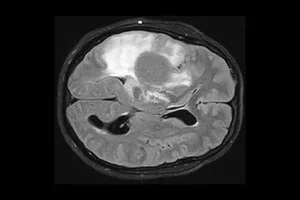According to common belief, humans possess five senses—sight, sound, smell, taste, and touch. However, touch is not simply one sense but rather a combination of various sensory inputs working in unison. The perception of gentle touch, for example, differs from feeling light pressure or experiencing pain. How do our sensory neurons manage to interpret such a wide range of tactile stimuli?
Recent research published in the journal Science has identified a force-sensing molecule within nerve cells known as ELKIN1, which plays a crucial role in detecting gentle touch. This molecule converts the sensation of gentle touch into an electrical signal, initiating the process of touch perception. When the skin undergoes slight deformations from a light touch, these force sensors within sensory nerve endings are activated.
The force sensors form a pore on the cell’s surface that remains closed until pressure is applied. Upon indentation, the pore opens, allowing an electrical current to flow. This electrical signal travels along the sensory nerve to the spinal cord and eventually reaches the brain.
The study, led by Gary Lewin and Sampurna Chakrabarti from the Max Delbruck Center in Berlin, demonstrated that ELKIN1 is essential for detecting very gentle touch. Mice lacking this molecule did not respond to a cotton bud being gently moved across their paw, although they retained the ability to sense other types of touch. This discovery sheds light on why we can differentiate between various tactile sensations—thanks to distinct force-sensing proteins that help us interpret different environmental signals.
ELKIN1 is the second touch-receptor molecule discovered in sensory neurons, following the discovery of PIEZO2 in 2010 by Ardem Patapoutian, a Nobel Prize laureate. PIEZO2 not only plays a role in sensing gentle touch but also contributes to proprioception, the sense of spatial awareness crucial for regulating movement.
Identifying these force-sensing molecules poses a challenge, requiring the isolated study of nerve cells along with the measurement of electrical currents while applying controlled forces to these cells. Although much of the research has been conducted on mouse neurons, findings from mice may not always directly apply to humans.
Research led by Mirella Dottori at the University of Wollongong investigated the function of ELKIN1 in humans. By generating specialized touch-responsive nerve cells from human stem cells, the team observed that ELKIN1 exhibited similar touch-detecting properties in human cells.
Beyond enhancing our knowledge of sensory perception, this research raises an intriguing possibility—ELKIN1 may provide not only humans but also individual cells with a refined sense of touch. Future studies will continue to explore additional force-sensing molecules and unravel how they assist cells and individuals in navigating their physical surroundings.



